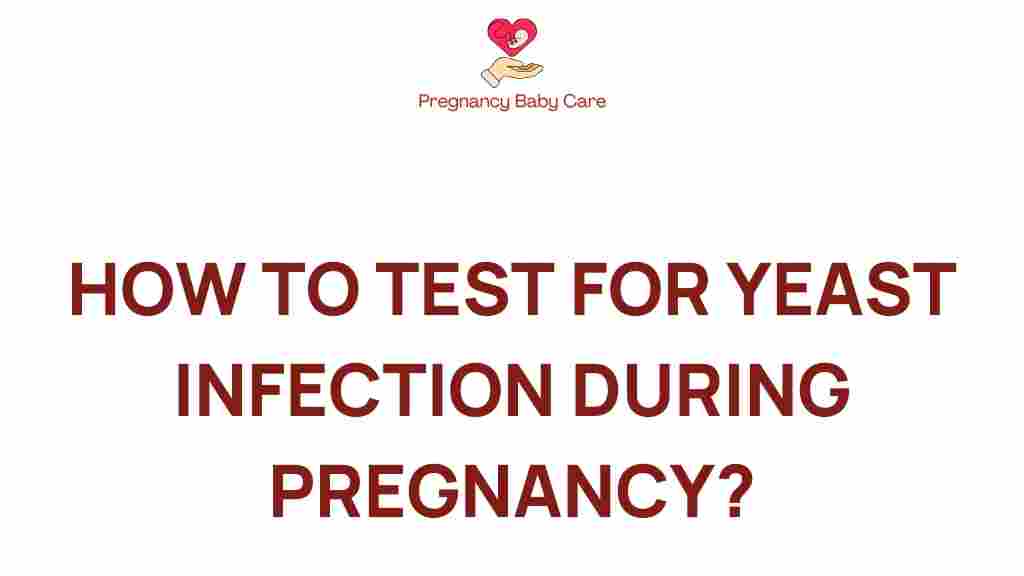Unveiling the Secrets: How to Test for Yeast Infection During Pregnancy
Pregnancy is a beautiful journey, but it can also come with its own set of challenges, including the risk of a yeast infection. Understanding how to recognize the symptoms, diagnose the condition, and seek appropriate treatment is essential for maintaining health during this critical time. This article will delve into the details of yeast infections in pregnancy, including symptoms, diagnosis, treatment options, and self-testing methods to raise awareness among women.
Understanding Yeast Infections During Pregnancy
A yeast infection, also known as candidiasis, is caused by an overgrowth of the fungus Candida, which is naturally present in the body. During pregnancy, hormonal changes can lead to an imbalance, making women more prone to these infections. Recognizing the symptoms early can help in timely diagnosis and treatment, ensuring the health of both the mother and the baby.
Common Symptoms of Yeast Infection
It’s important to be aware of the symptoms of a yeast infection during pregnancy. Common symptoms include:
- Itching and irritation: Persistent itching in the vaginal area is one of the most common symptoms.
- Unusual discharge: A thick, white discharge resembling cottage cheese is typical.
- Redness and swelling: The vaginal area may appear inflamed and swollen.
- Pain during intercourse: Discomfort or pain during sexual activity can occur.
- Burning sensation: A burning feeling during urination is another sign.
Diagnosis of Yeast Infection During Pregnancy
Diagnosing a yeast infection can sometimes be straightforward, but it is always best to consult with a healthcare provider. They may perform the following:
- Physical examination: A doctor will examine the vaginal area for signs of infection.
- Medical history: Discussing symptoms and past occurrences of yeast infections can provide valuable information.
- Laboratory tests: A sample of the vaginal discharge may be taken to confirm the presence of Candida.
Women should be cautious not to self-diagnose, as several other infections may present similar symptoms. Always consult a healthcare professional for an accurate diagnosis.
Self-Testing for Yeast Infections
While visiting a doctor is the most reliable way to diagnose a yeast infection, some women may wish to conduct preliminary self-testing at home. Here’s how you can self-test:
- Observe symptoms: Keep track of symptoms such as itching, discharge, and irritation.
- Use over-the-counter tests: Some pharmacies offer home test kits that can indicate the presence of a yeast infection.
However, it is crucial to follow up with a healthcare provider for confirmation and treatment recommendations. Self-testing is not a replacement for professional medical advice.
Treatment Options for Yeast Infections During Pregnancy
When diagnosed with a yeast infection, treatment options are available, but they must be safe for both the mother and the developing baby. Here are the common approaches:
- Topical antifungals: Over-the-counter creams and suppositories such as clotrimazole and miconazole are typically safe for use during pregnancy.
- Prescription medications: In some cases, a doctor may prescribe oral antifungal medications, but these are generally avoided in the first trimester.
Before starting any treatment, it’s imperative to consult a healthcare provider to ensure it’s safe for your specific situation.
Preventing Yeast Infections During Pregnancy
Preventive measures can significantly reduce the risk of developing a yeast infection. Consider the following tips:
- Maintain hygiene: Keep the genital area clean and dry. Wear breathable cotton underwear.
- Avoid irritants: Stay away from scented soaps, douches, and feminine hygiene sprays that can disrupt the natural flora.
- Healthy diet: A balanced diet low in sugar can help keep Candida levels in check.
- Probiotics: Incorporating probiotics may promote a healthy vaginal flora.
Troubleshooting Common Issues
Sometimes, women may experience recurrent yeast infections during pregnancy. If you find yourself in this situation, consider the following troubleshooting tips:
- Consult your healthcare provider: Discuss recurrent issues to evaluate underlying causes.
- Review medications: Some antibiotics can disrupt the balance of vaginal flora, leading to infections.
- Lifestyle changes: Assess lifestyle factors, including diet and hygiene practices.
Understanding your body and being proactive about your health can help manage and prevent yeast infections effectively.
When to Seek Medical Attention
While many yeast infections can be treated easily, it’s essential to know when to seek medical attention. Consider contacting a healthcare provider if:
- The symptoms persist despite treatment.
- You experience severe pain or discomfort.
- There is a noticeable increase in discharge, especially if it has an unusual odor.
- You have a history of recurrent yeast infections.
Being vigilant about your health during pregnancy is crucial for both the mother and the baby.
Conclusion
Awareness and education about yeast infections during pregnancy are vital for women’s health. Recognizing the symptoms, understanding the diagnosis and treatment options, and knowing how to self-test can empower women to take control of their health. Remember that while self-testing can provide preliminary insights, consulting with a healthcare provider is essential for accurate diagnosis and safe treatment.
For more information on women’s health and pregnancy-related issues, visit WomensHealth.gov. Staying informed and proactive about your health is the best way to ensure a smooth pregnancy journey.
Additionally, if you are looking for more resources on managing yeast infections, check out our detailed guide here.
This article is in the category Health and created by PregnancyBabyCare Team
